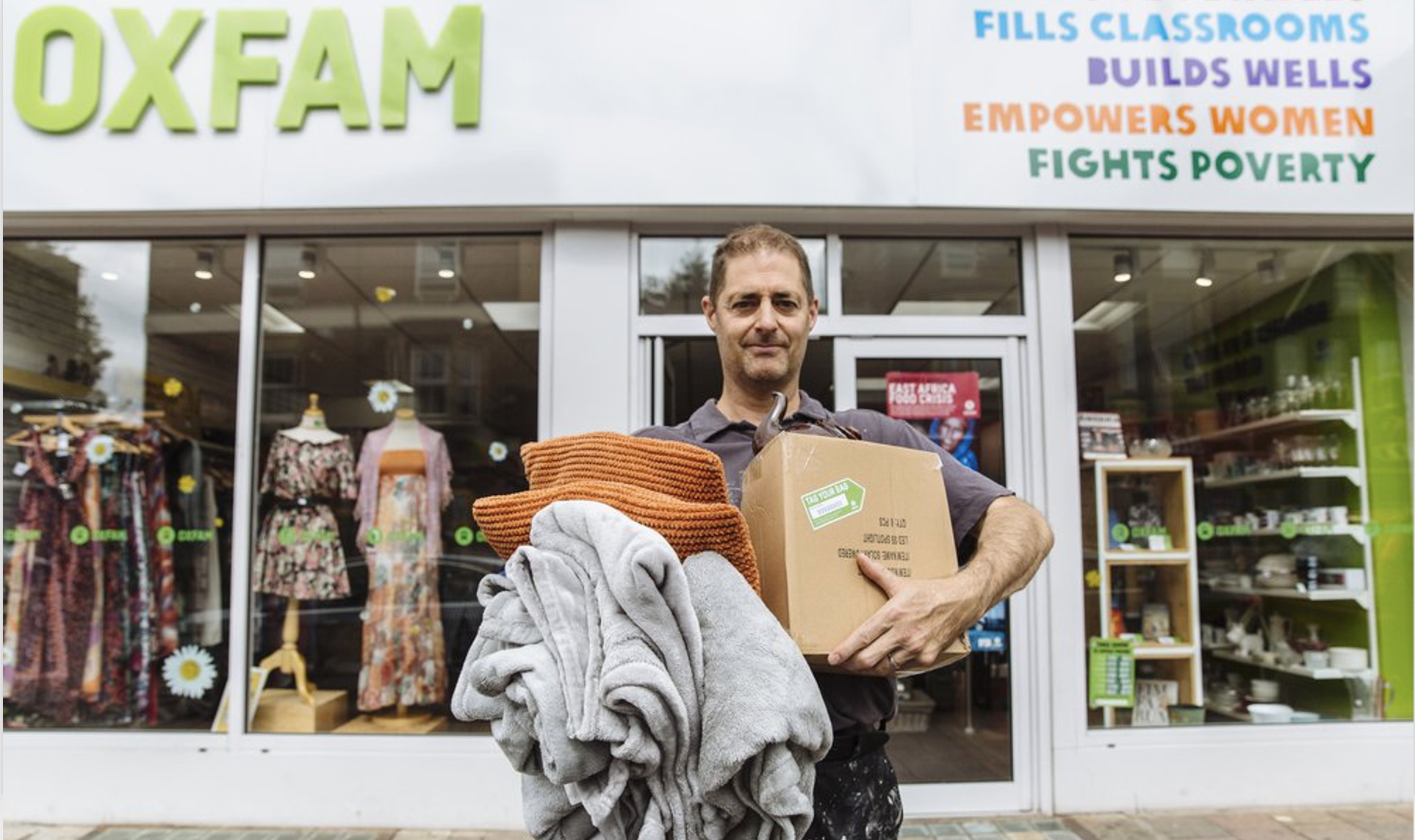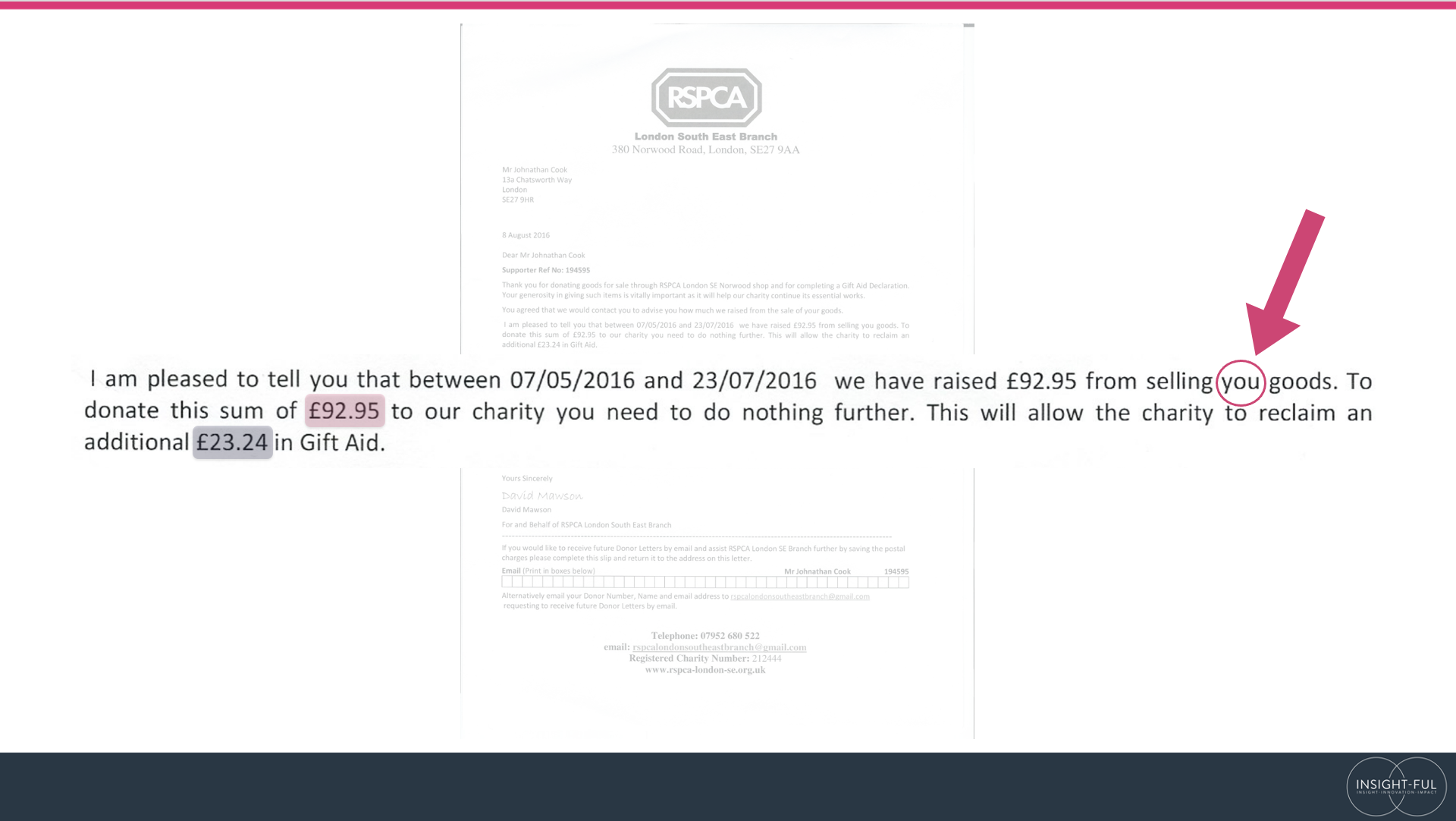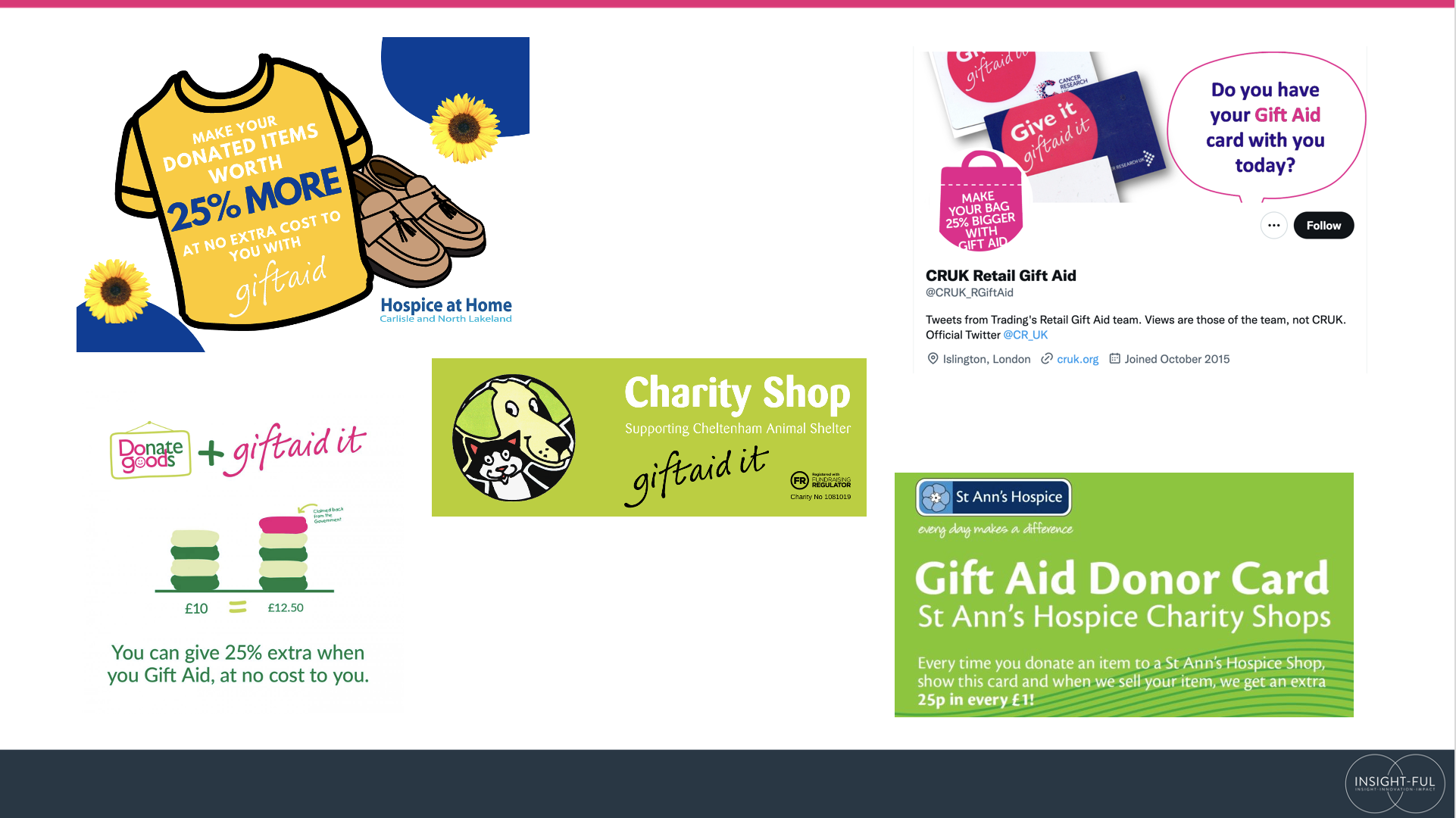I wish I’d thought of… charity shop Gift Aid
Charity shop Gift Aid. Is it fundraising history? Is it fundraising innovation? Is it a tax loophole for good? Honestly, it’s probably all three! Jonathan Cook takes you on the somewhat strange yet fascinating journey of how charity shops began making 25 per cent more for every pound they earned by simply selling the UK’s donated goods.
- Written by
- Jonathan Cook
- Added
- February 23, 2023
Today, I’m going to talk to you about something that, if I’m really honest, is just a great big tax dodge.
So let me start with this.

In my opinion, this mathematical formula is the single most important sum in the charity sector.
Do you know what it is?
It is the mathematical formula for calculating Gift Aid. That formula turns £10 into £12.50.
And ever since former UK Prime Minister Gordon Brown made every donation to charity ‘Gift Aid-able’ in 2000 – that mathematical formula has made billions of pounds of free money available to charities.
But there was always one bit of fundraising that slipped through the net – donations of goods to charity shops.

Every year, close to £750 million pounds is spent in high street charity shops. And if that amount of money was donated through normal, standard cash giving – the Gift Aid collected annually on it would be about £200 million.
To put that in perspective, that’s the annual budget of the Royal National Lifeboat Institution (RNLI).
£200 million pounds that’s free. Totally free. A literal magic money tree.
But the problem for charity shops is… it’s not possible to Gift Aid an item that has been donated, something like a coat.
Technically, a coat has no intrinsic value compared to actual money. Plus, you don’t know if the coat will sell. And this is the real problem, you’re not actually legally allowed to Gift Aid a coat.
But where there is tax, there are tax loopholes!
And forgive me, but any tax loophole that actually benefits charities and not billionaires, in my opinion, is a good tax loophole.
So back in 2006, some clever spark at UK charity Sue Ryder worked out that once you’d sold the donated coat, you had some cash. And cash is Gift Aid-able. But what to do?
They did something incredibly brave. They offered to give that money back to the donor. They pretty much went back to the donor and said, ‘We sold your coat for a tenner, do you want that tenner back?’
Now, do you think you have the guts to go to your boss with a fundraising idea that is essentially giving all the money back to the donor? Well, they did it!
Who said the charity sector was risk averse? 😊
But the risk was eliminated because fundraisers are amazing! They didn’t actually say ‘we sold your coat for a tenner, do you want the money back?’
What they said was…

It was a much nicer way of putting it. And, unsurprisingly, the donor did give the money back.
Eh voila! Sue Ryder had figured out how to turn donations to charity shops into Gift Aid-able commodities.
Now it isn’t quite as simple as that. There was actually some legal wording and things to get ironed out. Some lawyers got involved to make sure the contracts were right.
And if you want to get really geeky, the shop actually offers to act as the donor’s agent – selling his or her items on their behalf. But it works!
Of course, there was a reasonably hefty initial investment to upgrade tills and computer systems so they could capture people’s personal details.
They needed to label up all the donations in the shop itself so that each item could be attributed to the person who had donated that item.
They had to train volunteers to manage a system that is essentially a great, big, financial, taxation, logistical process.
They had to contact every person whose donated goods had been sold and deal with the people who said, ‘Blimey I didn’t realise my vintage coat was worth so much, maybe I will actually have the money back after all!’. (About half of one per cent of people do…)
But since Sue Ryder launched this in 2006, it’s a common sight when you enter a charity shop. You see volunteers tagging up the bags of donations with a little quick response (QR) code or bar code. You hear the beep as a scanner reads the code during a transaction, attributing that sale to the person who donated it.
In fact, this is an actual letter that I received, after donating some goods to my local charity shop.

Look! £92.95! It is what the Royal Society for the Prevention of Cruelty to Animals (RSPCA) sold my goods for, and then they received an extra £23.24 in Gift Aid.
They even made a typo in the actual letter that went to thousands of people for years and years. But it’s still a magic money tree!
Which means I’m still genuinely surprised these days if I go into a charity shop, and they don’t have Gift Aid.
I know this is not the most glamorous idea you’ve ever heard. You might be surprised that you’ve read this far, listening to me talking about tax loopholes! But this is an idea that has had real impact and has transformed charity shops the length and breadth of the United Kingdom. It’s made billions of pounds. You simply can’t overlook the sheer genius of this idea.

In 2021, Sue Ryder Care raised £59 million through their charity shops.
So, the bright spark, back in 2006…
…who spotted that loophole
…who worked out the process for administering the system
…who worked with fundraisers who would make the approach to their donors
…who trained shop volunteers
…who convinced their boss to take the risk to essentially give money back to the donors
…has potentially made Sue Ryder up to £15 million of free money – this year and every other year.
And that is why I wish I’d thought of that!
Editor’s note: This exhibit was presented at IWITOT10 on November 10th, 2022. You can watch Jonathan’s full seven-minute presentation below.
© All images supplied by Jonathan Cook
















